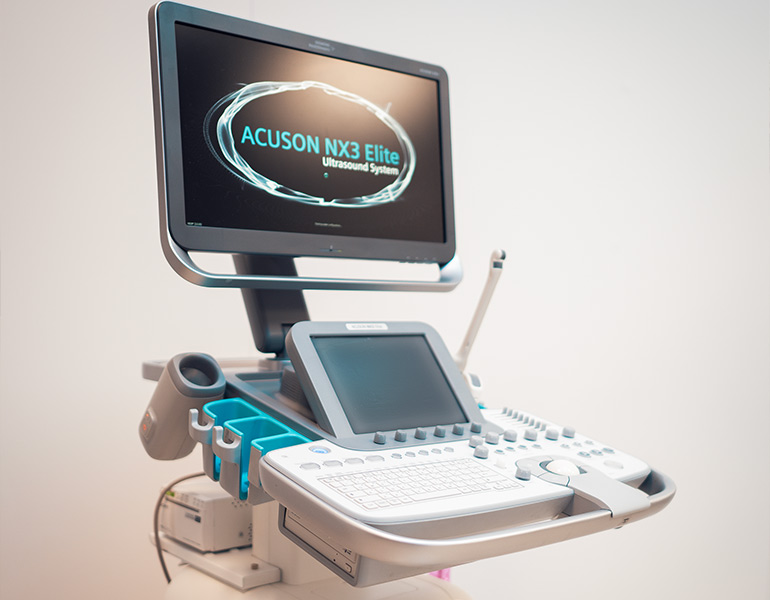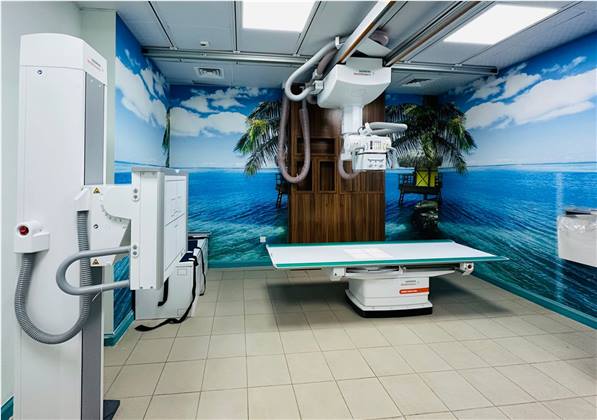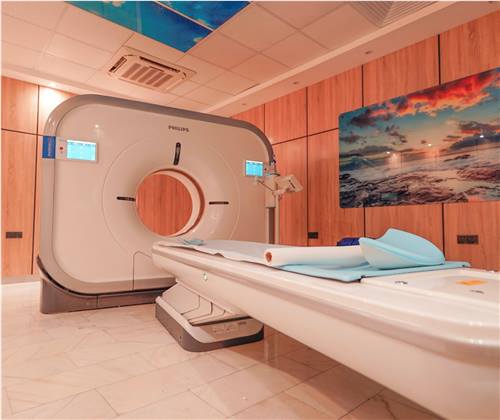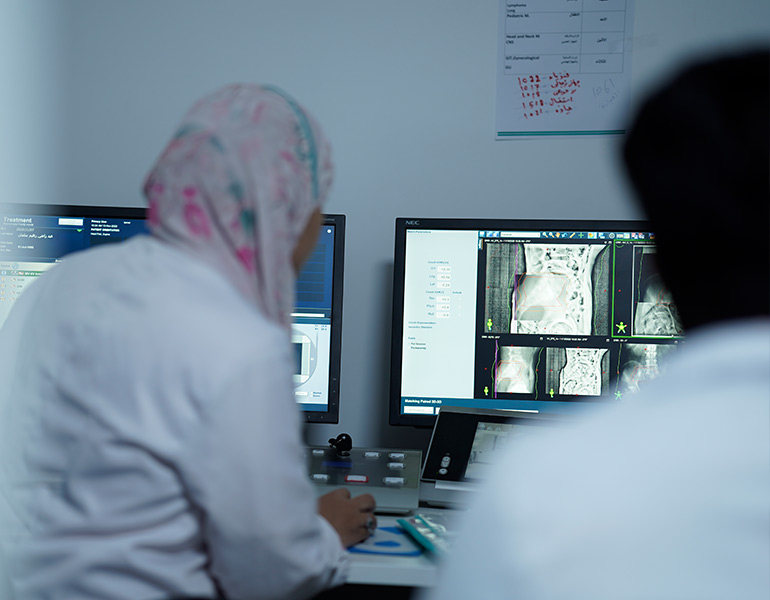Radiology Department
The Radiology Department at Warith International Cancer Institute (WICI) is a crucial unit that significantly contributes to providing comprehensive healthcare for patients. The department relies on the latest technologies and advanced equipment to deliver accurate and reliable diagnoses for various medical conditions, especially tumors.
Fluoroscopy Device
.png)
This device can evaluate the digestive system. The patient is given a barium substance during the imaging, and the esophagus is examined with barium. The stomach and colon are examined using double contrast (barium is used as a contrast agent for clarity, along with air as an auxiliary diagnostic agent).
Mammogram (breast cancer screening)
.png)
Mammography is an important test for detecting breast tumors. The breast is examined with ultrasound alongside the mammogram to provide an accurate diagnosis of breast tumors or reassurance that no tumors are present as part of early detection. Additionally, breast tissue samples can be taken using the mammogram device.
Diagnostic biopsies
.png)
Ultrasound

The radiology department is equipped with a range of the latest ultrasound machines, distinguished by their high accuracy and quality in diagnostics.
X-ray

Phelps Incisive CT 128 Sales Scanner

The CT scanner at Warith Institute (WICI) is among the most advanced devices in Iraq. It features high precision and speed, reduced radiation exposure, and superior image quality. For the first time, it integrates artificial intelligence capabilities to enhance imaging and minimize patient radiation exposure, along with modern features and technologies.
Magnetom Sempra MRI Scanner
.png)
The MRI scanner is one of the most advanced MRI devices in Iraq, with a strength of 1.5 Tesla. It features high quality and efficiency and is the renowned German brand, Siemens.
Examinations being imaged:
•
MRI of the brain, face and jaw, sinuses, thyroid gland, ear bones, cervical spine, breast, chest, abdomen, pelvis, and extremities.
•
Advanced magnetic resonance imaging (MRI) techniques can be performed.
•
Dynamic magnetic resonance imaging (MRI) of the liver, breast, pituitary gland, and prostate.
•
MRI of the body's various arteries (including the brain and neck arteries).
•
MRI of the nerve plexus.
•
MRI of the brain and neck veins.

.png)
.png)
.png)



.png)

